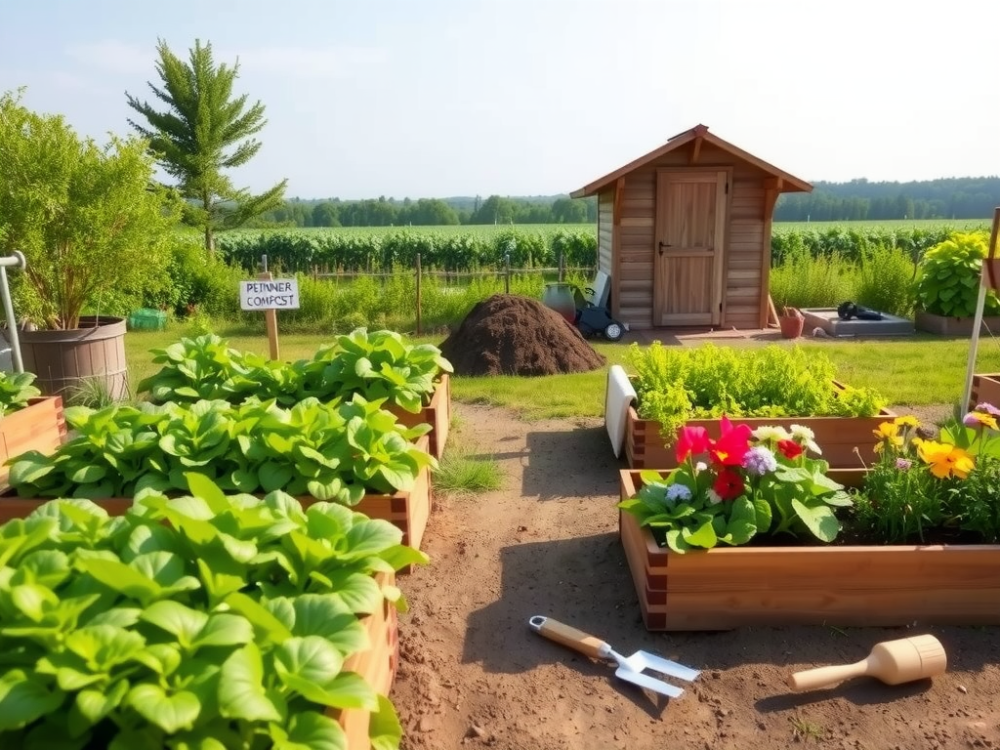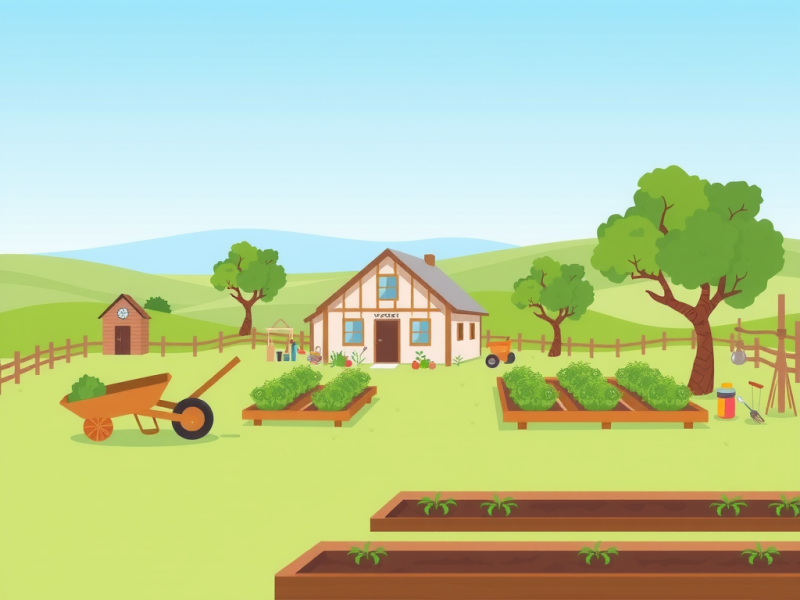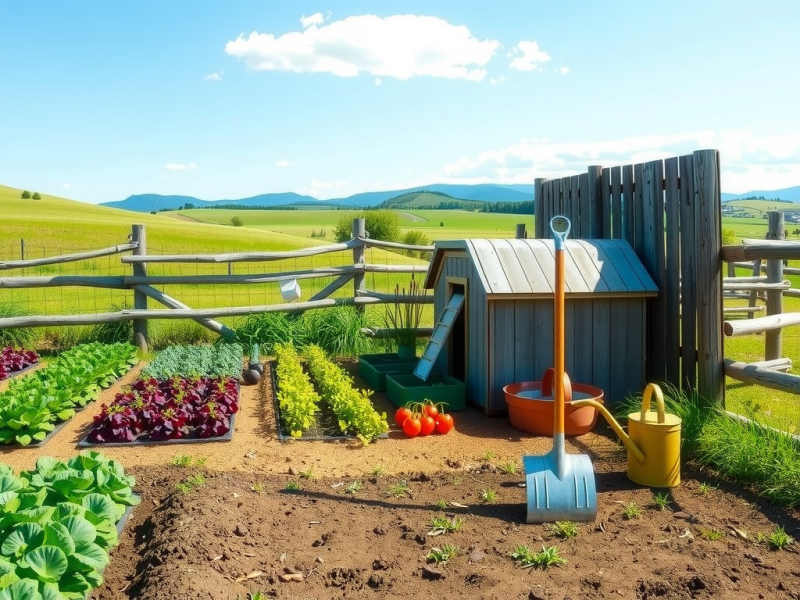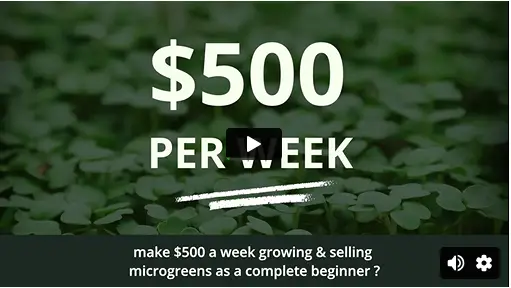Ready to dig into a more self-sufficient lifestyle? Let’s dive into some beginner-friendly homesteading projects you can start right now!
Homesteading isn’t only for seasoned pros; it’s an exciting way for anyone, including beginners, to embrace sustainable living.
Each project is designed to be manageable, utilizing repurposed materials and practical skills you can master with ease.
Start small, and soon you’ll feel empowered to expand your homesteading journey!
- Vegetable Garden: Start with easy to grow veggies like tomatoes or cucumbers.
- Composting: Create a compost system for kitchen scraps that produces nutrient-rich soil.
- Rainwater Collection: Set up a barrel to harvest rainwater for a sustainable water source.
- Repurposed Planters: Get creative with milk jugs or old tires as unique planters.
- Backyard Chickens: Build a simple chicken coop and enjoy fresh eggs.
- Herb Garden: Use indoor or outdoor spaces to grow culinary or medicinal herbs.
- DIY Fire Pit: Create an outdoor gathering space using bricks or stones.
- Canning and Preserving: Learn methods to preserve seasonal fruits and vegetables.
- Worm Composting: Use worms for quality compost in small spaces.
- Simple Greenhouse: Craft a plastic-covered greenhouse to extend your growing season.
Exploring Sustainable Living Principles
Engaging in sustainable living revolves around making intentional choices that positively impact our planet.
Every small shift in your routine can lead to meaningful environmental outcomes, promoting a lifestyle of self-sufficiency. Reducing waste plays a big role; for example, setting up a compost system significantly cuts down on landfill contributions.
Waste Reduction and Resource Conservation
Implementing ecofriendly practices, like embracing reusable products, can transform your household. Consider how you might boost your soil health by using homemade compost tea!
Simple changes, such as starting container gardening, can make a noticeable difference in your life. Together, we can foster a green future through practical actions.
Simple Lifestyle Changes
Adopting sustainable resources can start with your own backyard. For instance, try crop rotation in your vegetable garden to promote soil health and increase your yield. Imagine having fresh produce right at your fingertips while boosting your local food sovereignty!
Building Community
Connecting with others interested in community gardening can also enhance your learning experience. By sharing projects and advice, you can empower one another, creating a supportive atmosphere that thrives on collaboration.
Discover the potential of your land, from soil types to sunlight exposure, for better project outcomes!
“Every little bit helps! Start with what you can manage, and grow from there. ”
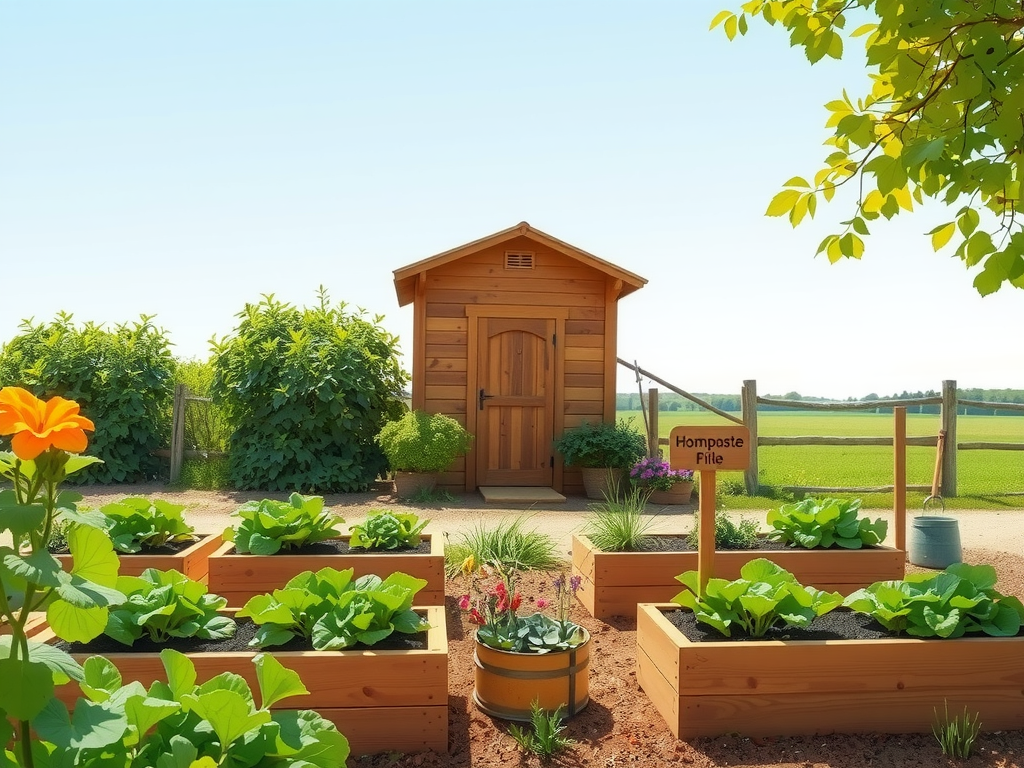
How To Start Vegetable Gardening
Embarking on your vegetable gardening journey is a delightful adventure! First things first, selecting the right location is key. Seek out a sunny spot that gets at least 6-8 hours of sunlight every day.
It’s also important that the area is easily accessible and close to a water source for simple maintenance.
Next up, soil preparation sets the foundation for your success.
Test the soil quality with a kit and enrich it with organic compost as needed. Lastly, choose easy-to-grow vegetables to kick things off.
Consider starting with tomatoes, radishes, or lettuce. Not only will you savor the rewards of your effort, but you’ll also dive into sustainable living by enjoying fresh, homegrown produce.
Selecting the Right Vegetables
- Tomatoes: Perfect for beginners and great in many dishes.
- Radishes: Fast-growing and ideal for quick harvests.
- Lettuce: A versatile choice for salads and sandwiches.
Creating A Compost System At Home
Establishing a compost system is an excellent way to embrace sustainable waste management in your daily life! Begin by gathering kitchen scraps like fruit peels and vegetable trimmings.
These green materials harmonize beautifully with brown materials such as dried leaves and cardboard. Strive for a balance of about 2:1 browns to greens for effective composting results.
This rich compost not only supports soil health but also fosters vigorous plant growth. Plus, reducing the amount of waste sent to landfills makes your gardening efforts even more eco-friendly!
With a bit of commitment, you’ll establish a thriving compost system that nourishes your garden and promotes your self-sufficiency journey!
Balancing Green and Brown Materials
Finding the right mix between greens and browns is essential. Here are some tips:.
- Greens: Include kitchen scraps, grass clippings, and fresh plant materials.
- Browns: Incorporate dried leaves, straw, and cardboard.
Maintaining this balance will enhance your compost’s quality and provide nutrient-rich soil for your vegetable garden.
Vegetable Gardening and Composting
- Vegetable gardening can reduce grocery bills by providing fresh produce at home.
- Composting can divert up to 30% of household waste from landfills.
- Homegrown vegetables can be more nutritious than store-bought options due to freshness.
- Creating a compost system can improve soil structure and moisture retention.
Tips For Raising Backyard Chickens
Imagine stepping into your backyard and collecting fresh eggs daily—what a delightful experience! Raising backyard chickens not only enhances your home with these feathered friends but also supports organic gardening and effective pest control.
For vibrant gardens, chickens naturally consume insects and pests, keeping your crops safe.
Their droppings provide nutrient-rich fertilizer, boosting soil health.
Essential Care Requirements:
- Housing: A sturdy chicken coop is necessary to shield your flock from predators. Good ventilation and cozy nesting boxes will keep them happy.
- Feeding: A balanced diet with quality feed, grains, and kitchen scraps ensures robust health and productivity.
Beginner-Friendly Breeds:
- Rhode Island Reds and Leghorns are fantastic for egg production.
- Consider Buff Orpingtons for their friendly nature and hardiness.
As you embark on this journey, remember that choosing the right chicken breeds and implementing simple care practices are key to self-sufficiency and a thriving flock.
Exploring Organic Gardening Techniques
Diving into organic gardening techniques allows you to nurture your garden sustainably. These methods align closely with sustainable living principles, enhancing soil health and promoting biodiversity.
Healthy soil is the foundation for vibrant plant growth, so consider adding compost and organic matter to boost fertility.
Importance of Soil Health:
- Healthy soil is essential for nutrient uptake and overall plant vitality.
- Utilizing a compost system enriches your garden, creating a thriving ecosystem.
Natural Pest Management:
- Employ companion planting to deter pests and encourage beneficial insects.
- Alternatives to chemical pesticides, like barriers and traps, are eco-friendly methods to keep crops safe.
Organic Fertilizers:
- Consider natural fertilizers such as compost tea, bone meal, or fish emulsion to nourish your plants.
- These organic options improve plant health while protecting the environment.
By integrating these organic gardening techniques into your routine, you cultivate not just plants but also a sustainable relationship with nature.
With a focus on food preservation and eco-friendly practices, you can transform your gardening experience.
Raising Backyard Chickens and Organic Gardening
- Backyard chickens can produce up to 300 eggs per year, providing a sustainable source of fresh eggs.
- Composting can reduce waste by up to 30%, turning kitchen scraps into nutrient-rich soil amendments.
- Implementing companion planting can increase crop yields by up to 20% while reducing pest populations naturally.
- Organic fertilizers can enhance soil microbial activity, leading to healthier plants and improved growth rates.
Benefits Of Raised Beds For Beginners
Diving into the world of gardening opens up a realm of possibilities, and raised beds make it a breeze for newcomers to get started.
These structures enhance soil health by improving drainage, allowing water to flow freely and keeping roots healthy and thriving.
Reduced risk of waterlogging means a happier garden and abundant produce!
Controlling pests becomes simpler with raised beds.
Their elevation makes it easier to keep an eye on plants, and adding mulch can create a protective barrier against unwanted visitors.
If you’re considering building your own raised beds, think about using untreated wood or repurposed materials. Fill them with a nutrient-rich mix of topsoil and compost, setting the stage for lush growth.
Your gardening journey begins here—let’s grow!
Top Tips for Building Raised Beds
- Select a suitable location: Choose a spot with at least 6-8 hours of sunlight.
- Choose the right materials: Untreated wood or recycled materials work wonders.
- Design your layout: Consider pathways for easy access to all sides.
- Soil choice matters: Aim for a mix of compost, topsoil, and natural fertilizers.
Essential Tools For DIY Gardening
Getting hands-on with DIY gardening calls for the right tools to make the process more efficient. Investing in basic gardening tools can make all the difference, from planting to maintenance.
Hand trowels and pruners are staples for handling seedlings and ensuring your plants stay healthy.
A garden fork is your best friend for turning soil, while a watering can or irrigation systems offer a reliable way to hydrate your plants.
Remember, tool maintenance extends their life—clean them after each use to prevent rust and store them in a dry place. Regular checks and sharpening will keep them in top shape, ensuring your gardening adventure remains enjoyable!
Must-Have Tools for Every Gardener
- Hand trowel: Ideal for planting small plants and digging.
- Pruners: Keep plants healthy by trimming dead or overgrown branches.
- Garden fork: Perfect for loosening and turning soil.
- Watering can: Easy to maneuver for hydration tasks.
Raised Beds and Gardening Tools
- Raised beds can improve soil drainage by up to 50%, reducing the risk of waterlogging.
- Gardening tools that are well-maintained can last up to 10 years longer than those that are neglected.
- Using a mix of compost and topsoil in raised beds can increase plant growth rates by 30% or more.
- Over 80% of gardeners report that raised beds make gardening more accessible and enjoyable.
Effective Pest Control Strategies In Homesteading
When you dive into homesteading, pest control becomes a key player in keeping your organic gardening dreams alive. Identifying harmful pests before they cause destruction is critical.
One of the best practices is to observe your garden daily; this helps you catch any unwelcome guests early on.
Consider using natural remedies like neem oil and diatomaceous earth, which are eco-friendly options that protect your plants without harming beneficial insects.
Plus, mixing in some companion planting techniques can work wonders—certain plants actually repel pests naturally. Here’s a quick list of effective methods:
- Crop Rotation: Change your planting locations each season to disrupt pest habits.
- Diverse Planting: A varied garden can confuse pests and reduce infestations.
- Regular Checks: Inspect plants often to catch problems as they arise.
- Natural Barriers: Use row covers or nets to physically block pests.
By emphasizing preventive approaches—such as maintaining soil health and supporting eco-friendly practices—you’ll nurture a resilient ecosystem that contributes to sustainable living. Your garden will thrive as you implement these effective pest control strategies!
Beginner Homesteading Projects
Starting your homesteading journey doesn’t have to be daunting. Simple projects can lead to a closer connection with self-sufficiency while being fun and educational. Here are some beginner-friendly ideas to get you started:
- Vegetable Garden: Begin with easy varieties like tomatoes or lettuce. Familiarize yourself with seasonal planting and organic pest control.
- Composting: Create a compost bin from food scraps to enrich your soil.
- Repurposed Planters: Get creative with items like milk jugs or old tires for unique planters.
- Rain Barrel Setup: Collect rainwater to provide a sustainable watering source.
- Backyard Chickens: Build a simple chicken coop to enjoy fresh eggs right at home.
- Herb Garden: Cultivate a space for both culinary and medicinal herbs.
- DIY Fire Pit: Craft an outdoor hangout spot using bricks or stones.
- Canning and Preserving: Learn preserving techniques to enjoy your harvest long after it’s picked.
- Worm Composting: Perfect for smaller spaces, worms yield nutrient-rich compost.
- Simple Greenhouse: Extend your growing season with a homemade greenhouse covered in plastic.
These projects foster a fulfilling journey into homesteading, allowing you to embrace sustainable living while gaining practical skills. So, roll up your sleeves and start planting your dreams!
Pest Control and Homesteading
- Daily garden observation can reduce pest infestations by up to 50% by identifying issues early.
- Using natural remedies like neem oil can decrease the need for chemical pesticides, promoting a healthier ecosystem.
- Crops that are rotated can lead to a 30% increase in yield due to disrupted pest life cycles.
- Companion planting can naturally repel pests, reducing the need for chemical interventions by up to 20%.

